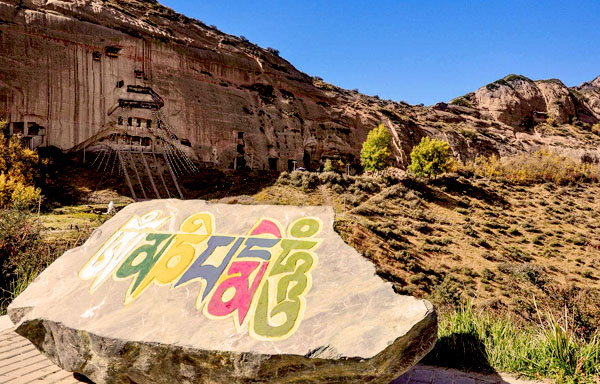- By admin
- In SilkRoadKnowledge
- 2016-06-07
Geographical Setting of the Silk Roads 3
Northeast Asia
This region encompasses the rocky Shandong and Liaodong Peninsulas o fnortheastern China, southern Manchuria, Korea, and Japan. Its coast is lined with many harbors, while peninsulas and islands enclose several seas—the Bohai, the Yellow Sea, and the East Sea/Sea of Japan. In ancient times this region was relatively isolated from the inland culture and political states of northern China, and formed part of an East Asian coastal culture that is still imperfectly understood.
Gradually, Northeast Asia came under an expanding Chinese cultural zone. Sea and overland traffic from Shandong and Liaodong to Korea, and trade to Japan either directly or via Korea, spread elements of Chinese culture to the northeast by around the 4th century BCE, and at an accelerating rate thereafter. Eventually, Buddhism spread to Korea and Japan by this route. Silk Road goods were also dispersed via these searoutes from as far away as Persia.
Northern Europe
Europe is virtually just a peninsula on the western tip of the great Eurasian continental landmass. For much of history northern Europe was too remote, too sparsely settled, and too culturally “backward” to play more than a marginal role in long-distance trade across Eurasia. But, even in ancient times, trade routes within Europe connected the region to the Mediterranean and thus to the Silk Road. Goods were carried from the Black Sea, up the Danube, and down the Oder to the Baltic even before the Roman conquest of Gaul in the middle of the 1st century BCE.
In medieval times the growing prosperity of Europe led to an increasing appetite for the spices, gems, textiles, and other luxury goods of lands to the east. New trade routes were pioneered, such as, beginning around 1000 CE, the Viking route from the Baltic through the trading settlement of Rus (near modern Moscow) and down the Volga to the Caspian Sea. Eventually, the European search for direct access to the riches of India and China led to entirely new maritime routes around Africa and across the Atlantic, and a revolution in the distribution of political and economic power throughout the world.
Mainland Southeast Asia
The huge peninsula that today includes Vietnam, Laos, Cambodia, Thailand, and mainland Malaysia is a land of fertile, rice-growing river valleys and coastal plains, and rugged, forested interior mountain ranges. The narrow Strait of Malacca, between the Malay Peninsula and the island of Sumatra, is one of the few navigable routes between the South China Sea and the Indian Ocean. As a historic choke-point for long-distance Eurasian maritime trade, control of the strait was a rich prize, much fought over by local peoples and invaders over the course of the centuries.
Despite its proximity to China, mainland Southeast Asia as a whole was more strongly influenced by Indian culture. Indian merchants traded across the Bay of Bengal to the coast of mainland Southeast Asia, as well as to the western islands of Indonesia. These merchants brought Hinduism wherever they settled in trading communities, and brought as well Buddhism which spread rapidly among local populations. Today, mainland Southeast Asia remains largely Buddhist.
Island Southeast Asia
This vast zone of islands—stretching from Taiwan through the Philippines to Indonesia —was settled beginning probably around the early 1st millennium BCE by the most remarkable mariners of the ancient world. These people, known as Austronesians or Malayo-Polynesians, became expert seafarers, moving from their homeland on China’s southeastern coast first to Taiwan, then down through the Philippinesto Borneo. From there they radiated in all directions in a process of exploration and settlement that paved the way for vigorous interisland and long-distance maritime trade that conveyed goods between southern China and India. In time, Chinese, Indian, Arab, and eventuallyEuropean ships plied these waters.
Several times over the long history of the Silk Road, trade shifted to this maritime route when conditions made overland trade difficult. A strong and enduring Arab presence in island Southeast Asia led to the conversion of most of the region’s population to Islam beginning in the 13th century.
Why Choose Us?
We are the top Silk Road tour operator based in Dunhuang, China. We focus on providing well designed Silk Road China Tours with resonable price and thoughtful service.
- Easy & carefree booking
- The best value
- Great travel experience
- Locally operated
Hot Tours
-

6 days Gansu tour to Binglingsi, Xiahe and Langmusi
Tour type : Private tour Price : from *** Destinations : Lanzhou - linxia - Xiahe - Langmusi - Hezuo - Lanzhou -

12 Days Gansu Highlights Tour
Tour type : Private tour Price : from *** Destinations : Xian – Tianshui – Lanzhou – Xiahe – Langmusi – Hezuo – Zhangye – Jiayuguan - Dunhuang -

10 Days Silk Road Classic Tour
Tour type : Private tour Price : from *** Destinations : Xian - Zhangye - Jiayuguan - Dunhuang - Turpan - Urumqi -

5 Days Zhangye - Alxa youqi Highlights Tour
Tour type : Private Tour Price : from *** Destinations : Zhangye - Alax youqi - Zhangye

